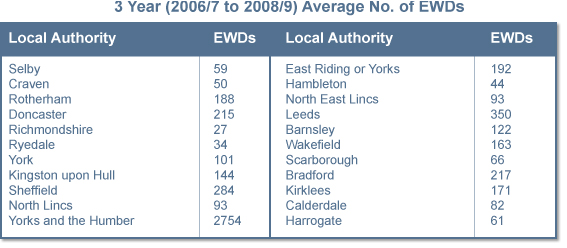
A. These are deaths which are directly related to the cold weather. These are people who generally have underlying health problems but would not have been expected to die during this period. This is why we call them ‘excess winter deaths’ (EWD).
Q. How are the figures calculated?A. The figures are calculated by taking into account the people who may have died anyway. The current Office for National Statistics (ONS) standard method defines the winter period as December to March, and compares the number of deaths that occurred in this winter period with the average number of deaths occurring in the preceding August to November and the following April to July.
Q. Who is at risk?A. Many different groups within society can be considered ‘vulnerable’ to the adverse affects of cold weather. However, we consider the following people to be most at risk of serious illness or even death.
 Q. What are the causes of EWD?
Q. What are the causes of EWD?
A. These deaths are caused by the cold making underlying health problems much worse for example; heart disease, strokes and breathing problems. Being too cold can also increase the risk of trips and falls, which can be very dangerous for the elderly and frail. Evidence suggests a strong link between EWDs and cold homes but not socio-economic deprivation. EWD's do not just occur in the poorest households, all of the most vulnerable are at risk if they live in a cold home.
EWD rates in England still do not compare well with the rest of Europe. Some Northern European countries, which experience colder winters, have has half the EWD rate of the UK. This is largely because people in these countries are better prepared for the cold. Countries which have lower EWD's have more energy efficient housing.
Q. Excess Winter Deaths – how does it add up in your area?A.
 Q. What are the statistics?
Q. What are the statistics?
A. On average over the last 3 years, around 27,000 people died in England over the winter months because of cold weather when compared to other times of the year. EWDs from cardiovascular disease are almost three times higher in the coldest quarter of housing than in the warmest quarter and it has been suggested that 21.5% of all these EWDs are attributable to the coldest quarter of housing.
Circulatory diseases cause around 40% of EWDs and respiratory diseases about a third. In Britain a cold spell during a mild winter is followed:
- Two days later by a sudden rise in heart attacks
- Five days later by a big rise in the number of strokes
- Twelve days later by a big rise in respiratory illness.
A. There were 2,500 EWDs in Yorkshire and the Humber in 2010/11. There were nearly 3 times as many EWDs as there are deaths from accidents (there were 880 accidental deaths in Yorkshire and the Humber 2010)
In those aged 75 and over there were 1,800 EWDs (over 70% of all EWDs) in this region in 2010/11. The EWD Index in Yorkshire and the Humber in 2010/11 shows that there were 16% more deaths in the winter period compared with the average non-winter deaths.
Q. What is the impact?A. The impact on individual suffering, families and communities is tremendous. The impact on service delivery organisations and care providers is also vast. An example of the financial cost to society can be seen in the cost of excess winter admissions for the period 2010/11 which was £23,843,532. That is enough to fund the salaries of 600 nurses* or 34,000 houses to be insulated!**
